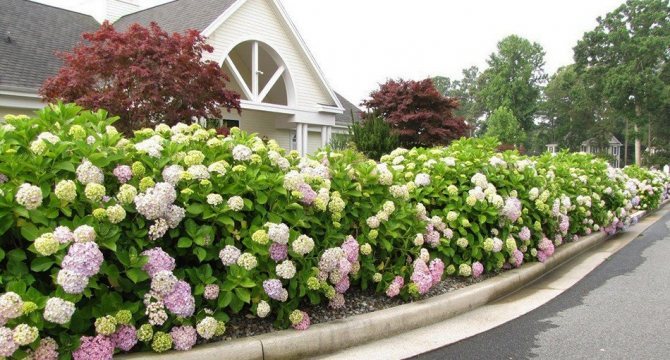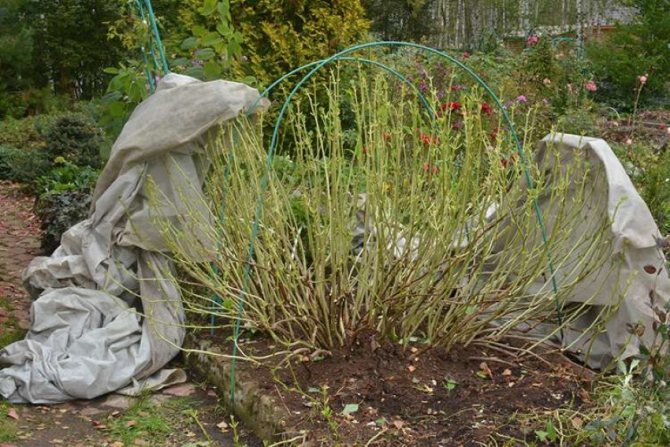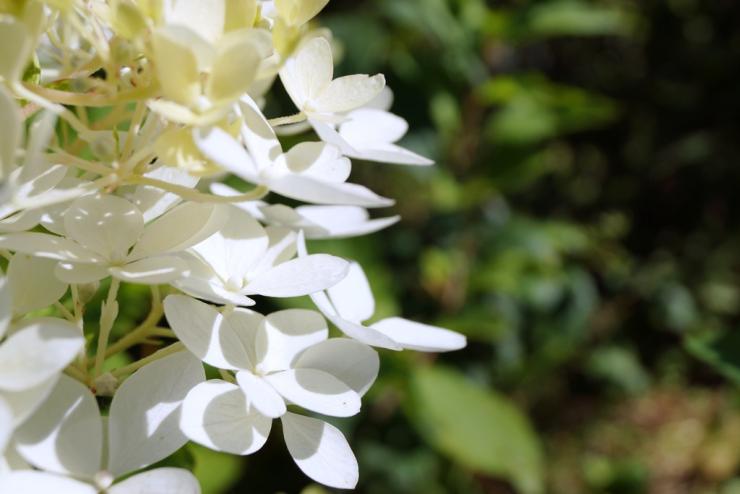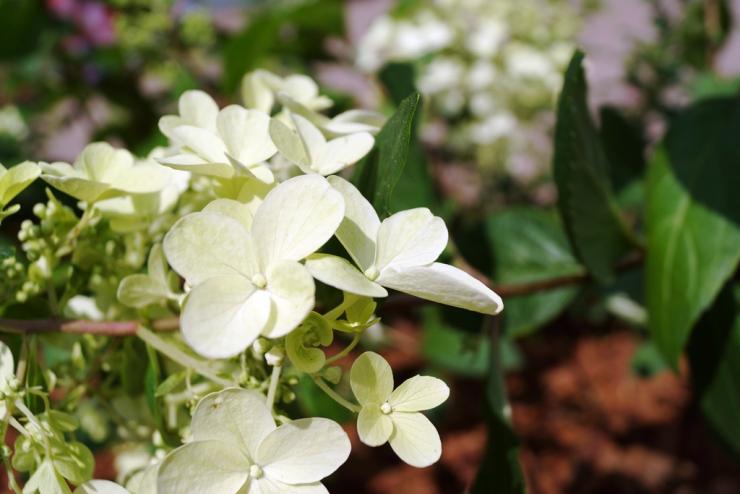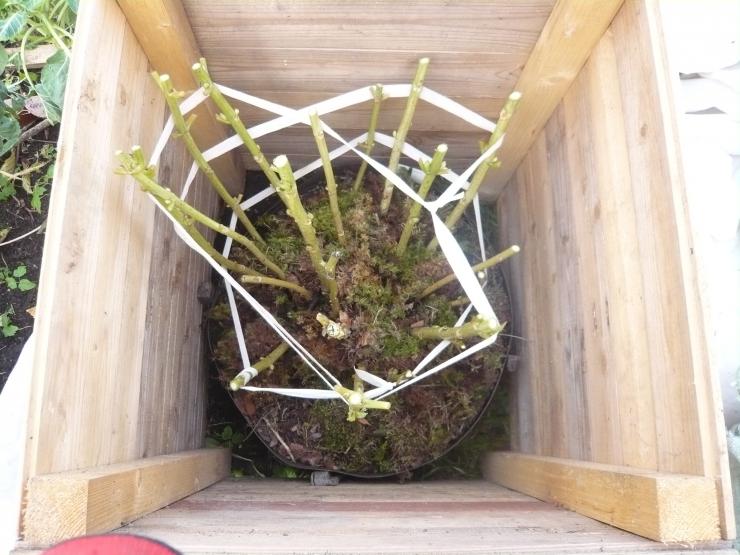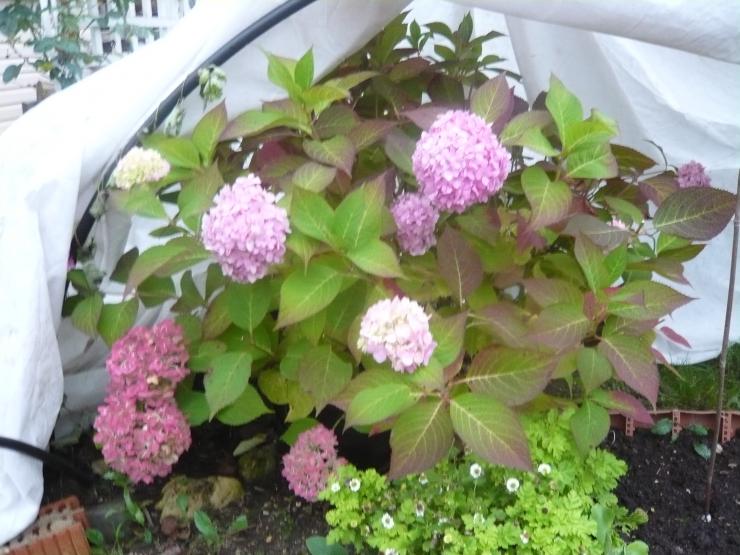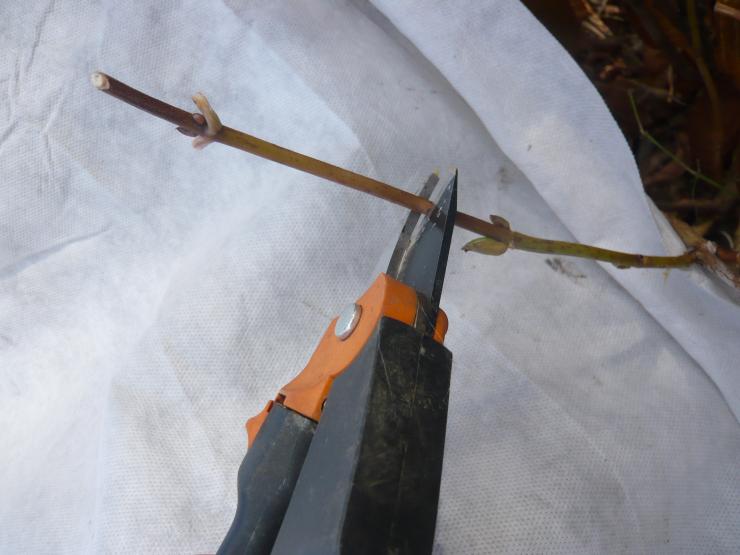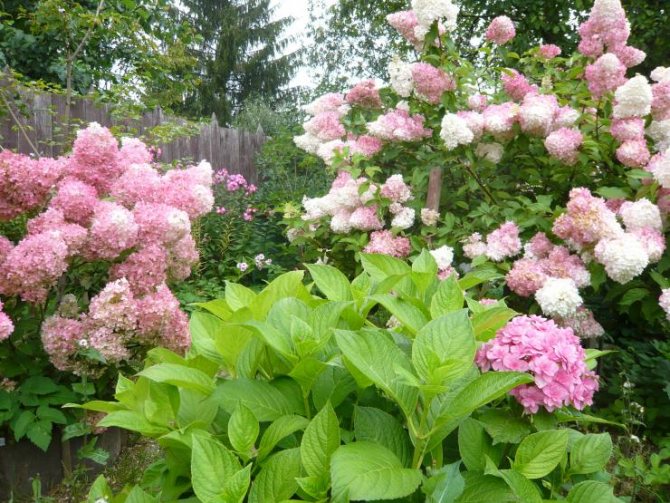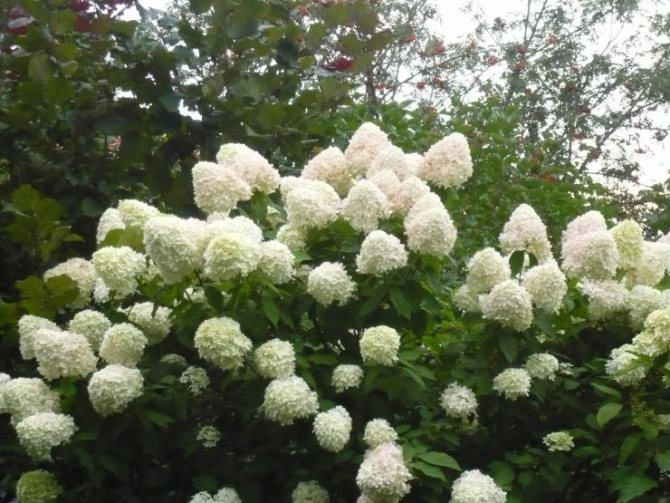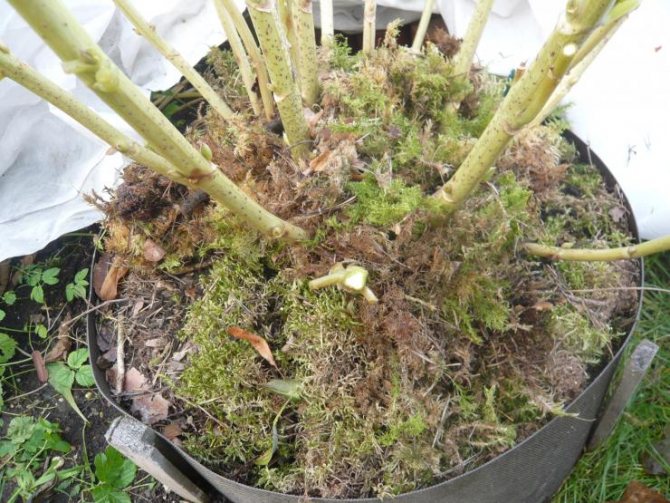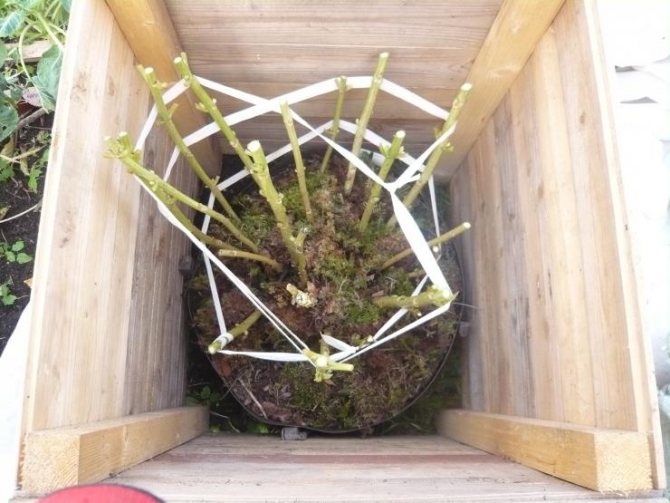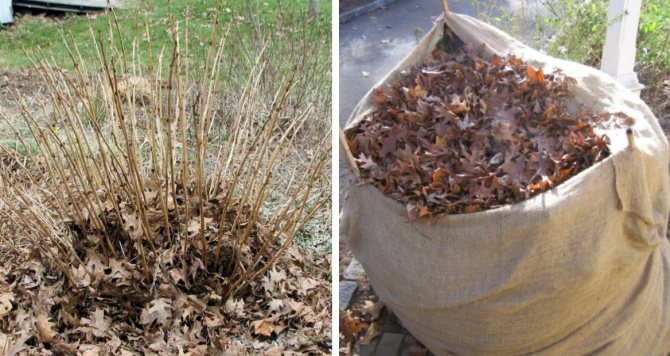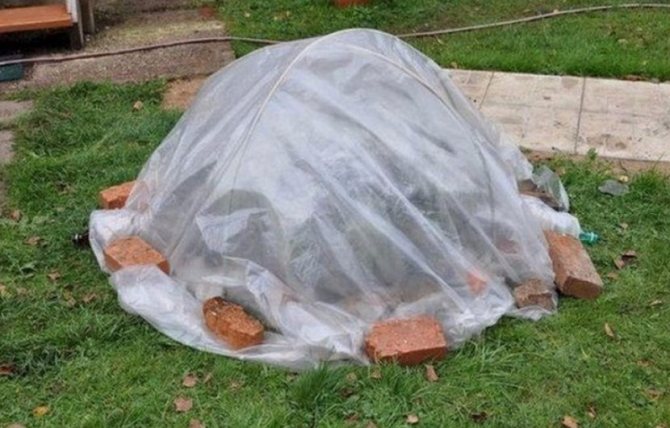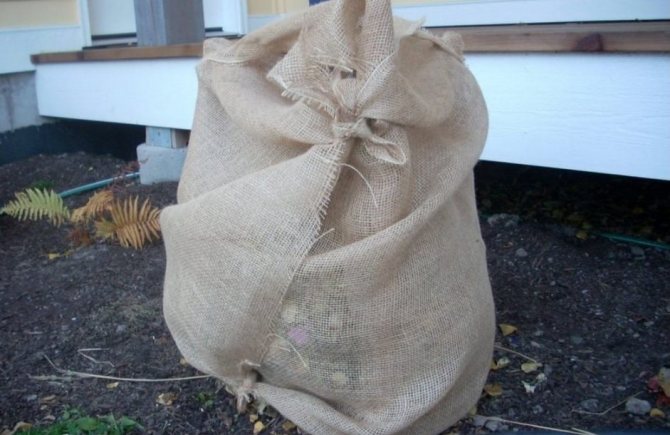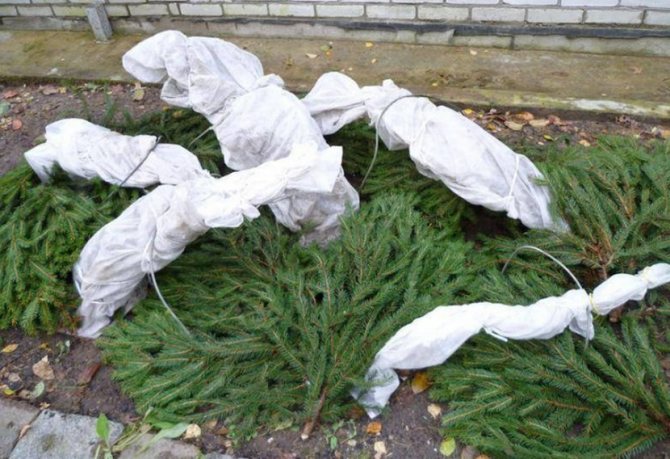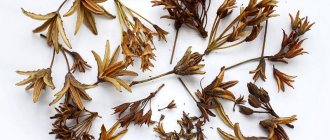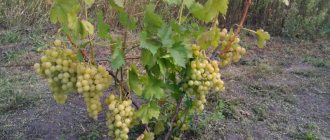Hydrangeas, like other demanding flowers, need careful maintenance. Hiding the hydrangeas for the winter will help keep the flower buds intact. When preparing for winter frosts, it is necessary to take into account the variety of shrubs and the climatic conditions in which they grow.
Hiding the hydrangeas for the winter will help keep the flower buds intact. Illustration for this article is used under a standard license <814
How hydrangea winters in the Moscow region
The climate of central Russia has its own characteristics. December in the Moscow region is characterized by frequent temperature changes, thaws and rains. January and February usually bring frost and cold winds to this area. In such conditions, hydrangeas need protection.
Large-leaved and tree-like hydrangeas are especially sensitive to climatic surprises. Paniculata are more hardy, but plants 1 - 2 years of age need shelter for the winter, no matter what species they belong to. Plants transplanted to a new place in the fall also need protection.
The homeland of hydrangea is the Far East, China and Japan. Therefore, plants, accustomed to abrupt changes in temperatures and high humidity, quite easily adapt to the conditions of the Moscow region. For example, adult specimens of panicle hydrangea are able to winter safely without shelter, even at temperatures of -40 degrees.
They begin to warm the garden hydrangea in the Moscow region from the middle of summer, no later than the beginning of autumn. The preparation includes a number of procedures. You can not start sheltering if the plant is weakened and sick. If you neglect the rules of preparation, then later you can lose abundant flowering.
What varieties are suitable for Siberia
Paniculata and treelike hydrangeas take root best in the cold. They are not picky, they winter well without any shelter.
New variety of panicle shrub Limelight has an interesting feature. The buds first have a greenish tint, then bloom with lush, snow-white panicles, and in the fall they turn pink blush.
Compact new Phantom variety, also winter-hardy, characterized by a very abundant flowering.
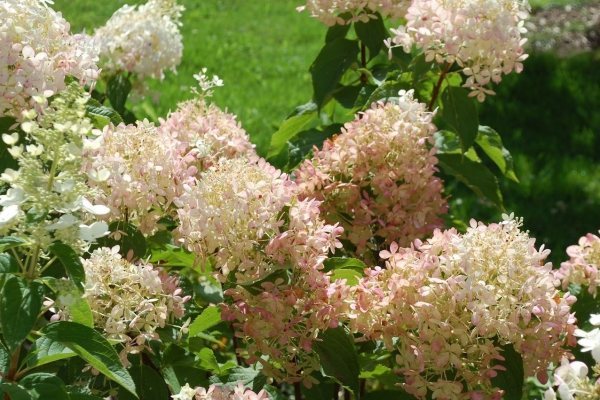
Winter-hardy variety Phantom
Variety Vanilla Fries very quickly forms a large bush, up to 1.5 m high. By autumn, the white caps gradually turn red.
Deservedly popular tree hydrangea variety Anabel, which has very large, filled caps of inflorescences.
Perfect winter hardy grade Incredible, with large globular inflorescences and a delicate aroma, produces healthy, hardy shoots. The bush has a rounded shape, reaching 1.5 m in height.
Endless Summer cultivar blooms on the shoots of the current year, which is very unusual for a large-leaved variety. The inflorescences have an amazingly beautiful carmine color.
Top dressing hydrangeas in the fall
They begin to prepare hydrangea for wintering in the fall. During the period of bud formation, the shrub is fed with phosphorus-potassium fertilizers; before wintering, it is useful to add five to ten kilograms of mature compost or humus under the bush.
What else to feed hydrangea? Gratefully hydrangea reacts to feeding with solutions of fermented milk products diluted with water, such mixtures contain the lactic acid bacteria and yeast it needs.
How to prepare hydrangea for winter in the Moscow region
Plants affected by pests and diseases are weakened, they are not able to winter safely even with proper shelter. Therefore, the preparation of hydrangeas for winter in the Moscow region begins in the middle of summer and includes a number of activities:
- refusal to use fertilizers containing nitrogen compounds, since they provoke the growth of new shoots, thereby reducing frost resistance, phosphorus and potassium should be used for feeding from mid-summer;
- at the beginning of autumn, it is worth stopping watering the plant, with the exception of prolonged dry weather at high air temperatures, the cessation of watering will accelerate the desalinization of the branches, which is necessary for a safe wintering;
- shortly before the hydrangea shelters, at the end of the rainy period, you will need to get rid of the foliage on the lower branches, and before the winter season, be sure to remove all the remaining leaves.
In order for the hydrangea to endure the winter well, it is necessary to carry out pruning, hilling, only after that proceed to the shelter. You also need to remove all branches affected by pests and diseases.
Spring work
With the arrival of spring in the Urals, it is necessary to remove the shelter from the bushes in early - mid-April, gradually removing layer by layer. Otherwise, the overwintered hydrangea will inevitably die with return spring frosts.
First, remove the lutrasil, after 7-10 days it will be possible to free the shrub from the foliage. And only then remove the rest of the covering material.
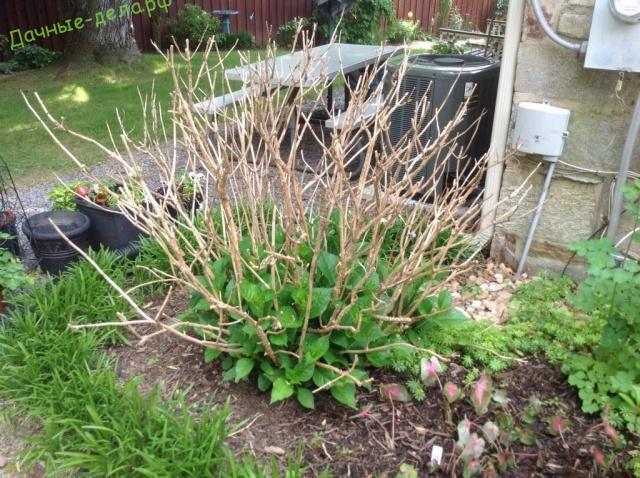

Whether to shelter a hydrangea for the winter in the Moscow region
Among gardeners, opinions on the need to shelter hydrangeas for the winter were divided. Someone, considering the plant to be winter-hardy, is opposed to the use of covering measures. Someone, reverently about their plants, expresses the opposite opinion.
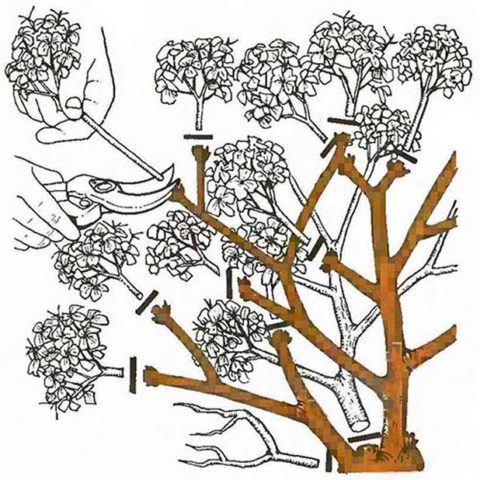

Pruning scheme before shelter for the winter
Among hydrangeas, paniculate species are the most frost-resistant. They are able to withstand temperatures down to -40 degrees without damage. But even a panicle hydrangea of 1 - 2 years of age requires shelter for the winter.
Treelike and large-leaved hydrangeas are less resistant to winter conditions in the middle zone. Hydrangea varieties such as Invincible Spirit, Bella Anna, Inkredibol and Annabelle are less winter hardy - these plants need annual shelter for the winter, regardless of the age of the plants.
The rest of the tree species do not need shelter for the winter. And large-leaved, distinguished by bright large flowers, need special care. Winter is a test for them, therefore they require increased attention.
Important! The risk of plant death increases even with a slight decrease in temperature, if the planting site is chosen incorrectly.
Hydrangea does not tolerate drafts and does not tolerate increased humidity. In wind-blown areas, the plant feels bad, this can affect its flowering in summer.
Plant care
Treelike and panicle hydrangeas are not too capricious... In order for the plant to grow stronger and delight with abundant flowering, you will need to follow simple rules:
- sufficient watering;
- root mulching;
- correct pruning;
- seasonal feeding.
The plant loves water very much, knows how to accumulate it... The very name of the shrub is translated as "A vessel with water". In summer, shrubs need 2-3 buckets per 1 bush, 3 times a week. In autumn - 2 times a week.
When to close hydrangea for the winter in the suburbs
Shelter of hydrangeas for the winter in the middle lane is carried out depending on weather conditions. When night temperatures drop to -5 degrees with positive thermometer readings, they start laying branches during the day. It should be borne in mind that tall plants in some cases are laid in stages.
If the bush is tall and the branches are elastic, they are first bent to 45 degrees, fixing with a wire hairpin. And a week later, the branches are bent to the ground.They become malleable.
At temperatures of -8-10 degrees at night, the plant is covered for the winter.
When and how to properly remove shelter in spring
The weather in spring is unstable: freezing temperatures during the day can be replaced by severe frost at night. Therefore, the shelter from the bushes is removed in stages, focusing on the weather. Sometimes you have to return the film that was removed in the morning at night. They do this when the first warmth comes, but at night the temperature is steadily kept below zero. The bushes are finally opened, untied and untied when they start growing, but a layer of non-woven material is left for insurance. It is removed when the plants are no longer threatened with frost.
How to cover a hydrangea for the winter in the Moscow region
In the Moscow region in winter, the soil freezes 1 m deep. Under the snow cover, freezing reaches 0.5 m. Therefore, in addition to sheltering the plants, you need to huddle - insulate the near-trunk circle.
Fallen leaves and sawdust are not suitable for these purposes due to the high risk of pests and the spread of fungal diseases. Rotting foliage also attracts rodents, which are capable of destroying the hydrangea.
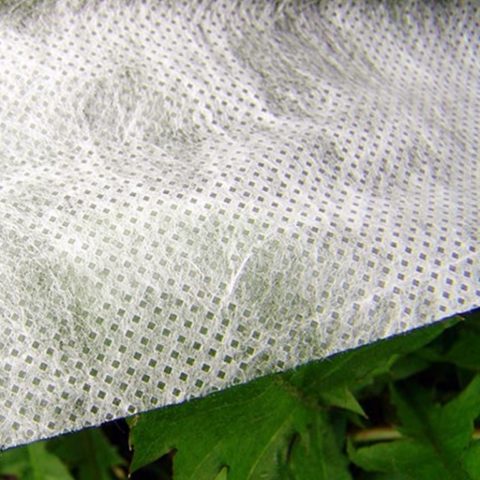

Lutrasil and spunbond - non-woven covering materials, indispensable for plant protection in winter
The trunk circle is covered with sphagnum, which is subsequently mulched with two layers of humus or compost.
Spruce branches, burlap (old model, since it is the most dense and less ventilated), covering materials (lutrasil, spunbond), plastic wrap are used to shelter the shrub. For insulation, you can use dry maple or chestnut leaves. They do not rot and retain heat well.
How to cover a hydrangea for the winter in the Moscow region
Reliable protection from winter cold hydrangeas will provide non-woven lutrasil or spunbond fiber. It is necessary to choose materials with a density of at least 60 g per sq. m. Large-leaved hydrangea will need to be covered with several layers of material: from 2 to 4. This is especially true in snowless winters.
Before covering the plants for the winter, it is necessary to carry out sanitary and rejuvenating pruning, removing weak and diseased branches. It is also imperative to remove leaves, flowers and root shoots. Skeletal branches can be shortened, leaving 1 - 3 buds.
You do not need to cut off all the branches at once. Pruning can be divided into several seasons. But the inflorescences must be removed before each preparation for winter.
Before wintering, it is worth feeding with this composition: for 10 liters of water, 1 tbsp. l. potassium sulfate and superphosphate. A one-time feeding is enough.
After dropping the foliage, the plants are treated with a 3% solution of Bordeaux mixture in order to prevent pests.
After pruning, feeding and hilling, the branches are bent to the ground, fixing their position with hairpins made of thick wire. The ends of such brackets should be deepened into the ground by 15 - 20 cm so that gusts of wind could not pull them out of the ground.
And only after that they proceed directly to the shelter. Protect the shrub with any of the recommended materials, fixing it around the perimeter of the trunk circle with stones or a layer of earth. The material is wrapped around the plant and tied in several places with a rope or fixed with tape.
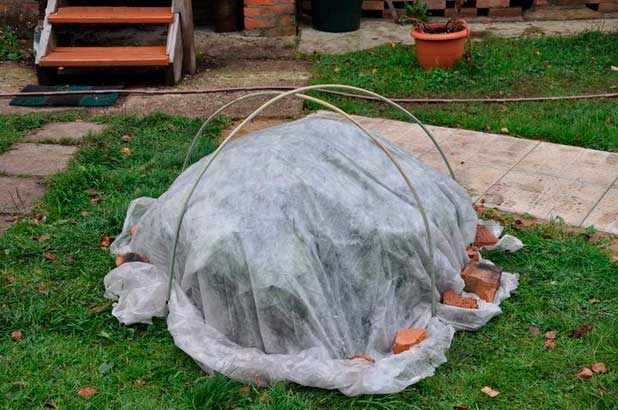

Shelter with wire arcs
You can make a "case" from burlap. In December, a bag is put on top or wrapped in plastic wrap. When thaws and rains recede, the film is removed.
Experienced gardeners build structures from metal arcs or plywood to protect hydrangeas. The walls of the box are made double. Between them there should be a layer of air 10-15 cm thick.
Shelter of hydrangea paniculata for the winter in the Moscow region
The most optimal protection from winter cold for panicle hydrangea is hilling + shelter. They do it like this:
- A low young plant is easier to cover than the rest: the branches are tied in the form of a cocoon, spruce branches, old tree branches (preferably not fruit trees), roofing paper and plastic wrap are laid on top. This is enough for a safe winter. The snow cover will make such a "blanket" even more reliable.
- Shrubs with high branches are similarly covered. Only they need to be bent to the ground and secured with wire brackets. Adult plants are spud and wrapped in non-woven materials.
For protection from cold weather, you can build a structure of wire arcs.
Important! There must be an air gap between the layers of film or fiber.
Shelter of large-leaved hydrangea for the winter in the Moscow region
Large-leaved hydrangeas are most unstable to changes in temperature, cold winds and dampness. Therefore, it is necessary to cover them for the winter.
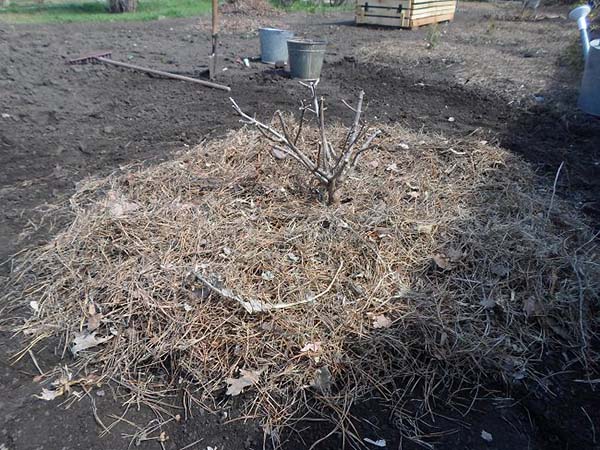

Mulching the trunk circle in front of the shelter for the winter
Before using covering materials, pruning should be done. Young shoots are shortened by 20 - 30 cm, diseased and weak branches are cut to the base. The inflorescences are removed. You cannot pick off the leaves with your hands; for these purposes, you need to use a pruner.
Then proceed as follows:
- They bend the branches to the ground, placing spruce branches or plywood under them to protect them from contact with the soil.
- The branches are wrapped in nonwoven fabric.
- They put arcs and cover them with fiber in two layers.
- Endless Summer needs a 4-layer cover.
A plywood box provides reliable protection. It is easy for craftsmen to build it on a personal plot. The procedure looks like this:
- After pruning and mulching the trunk circle, the branches of the hydrangea are tied with a garden bandage.
- A plywood or wooden box is made according to the size of the plant. Lower it from above.
- The bush is covered with dry earth.
- Cover the box with plywood and cardboard.
- On top of the first box, a second, larger one is placed. The voids between the walls of the boxes are covered with dry sawdust. Cover the top with plywood.
- The box is wrapped outside with a covering material, then with a film and tied with a rope.
Shelter of hydrangea tree in the suburbs
Treelike hydrangeas, like paniculate ones, tolerate the winters of the middle zone quite well. But not all varieties are suitable for growing in the Moscow region. For example, oakleaf and petiolate have very weak frost resistance. Plants do not die in winter conditions, but they also cannot please with lush flowers.
The lower edges of the fiber (film) are fixed with stones or a layer of earth
Therefore, when choosing a variety, it is necessary to study the information about these plants. Preparation for the winter of tree hydrangeas is carried out in the same way that is necessary for paniculate.
The plant is mulched with a mixture of peat, rotted manure and soil from the site. With the onset of spring, the mulch must be removed. After pruning, feeding and mulching, if necessary, bend the branches to the ground and cover them with spruce branches, on top of which lutrasil, spunbond or film are laid.
Features of the hydrangea shelter in the regions of Russia
To preserve hydrangeas in different regions, you need to prepare the plants for winter in time. This is possible, if you focus on the timing: in the Middle zone and the Moscow region, it will be necessary to shelter later than in Siberia or the Urals. If covered early, the plant may suffer from excessive moisture, and if the process is delayed, the young bushes may die.


Usually they are guided by the local air temperature: the night indicator should reach a stable mark of 0 ° С
Terms of preparation of panicle hydrangea and other varieties for winter in the Moscow region
Our winters in the first half can "please" with rains, so it is important to use a film instead of an umbrella. The water that gets inside the bush will then freeze and damage the shoots. In addition to such a foil umbrella, the bushes can be wrapped in non-woven material.If you are the owner of a large-leaved hydrangea in the Moscow region, then the shelter for the winter begins before the first frost. When choosing to pin the shoots to the soil, the process begins 10 days before the cold weather. The recommended start date for preparation is the second half of October.
How to properly cover roses for the winter in the suburbs. In a special publication of our portal, we will tell you in detail how to cover roses for the winter in the Moscow region. You will find out why, when and how you need to cover roses, the correct preparation of roses for winter and the types of covering material for roses.
Preparing hydrangeas for winter in the Urals
The Ural winters can please the temperature drop to -40 ° С. This will be critical for the large-leaved form. Therefore, the Ural growers prefer varieties that are more resistant to frost, which they still cover. In the Urals, agrofibre, wooden boxes, spruce branches, deadwood mulch, spandbond are used. It is better to start training in the Urals in early October.
Siberia: timing of shelter
The shelter of the tree and paniculate species in Siberia can be neglected if the bushes are already mature, but then you may not see the beautiful flowers. As preparation measures, the bush is hilled to a height of 25 cm, the branches are pinned to the spruce branches laid on the ground, and the shelter is covered with non-woven material. In addition to a simple shelter, caring flower growers thickly sprinkle the center of the bush with dry plant debris, which will serve as a warm air cushion. It can be needles, sawdust, and fallen leaves. In conclusion, you can put slate or roofing felt on top of the covered bush. The older the hydrangea becomes, the fewer shelter operations will need to be performed, and the adult beauty will bloom wonderfully after a long winter.
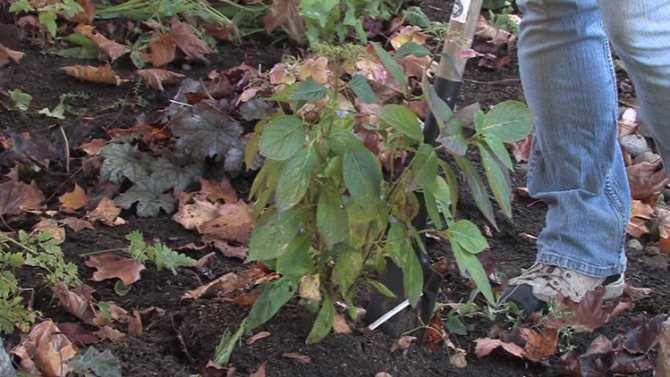

The recommended start date for the shelter is the first half of October
Other regions
The southern regions cannot oppose their mild winters to the harsh Siberian frosts, so you can simply limit yourself to hilling the trunk circle.
Experienced gardening tips
Irina Vladimirovna, 55 years old, Moscow.
I have been growing a tree hydrangea in my dacha for 10 years, and I love this plant very much. I cover with spruce branches and plastic wrap for the winter. My hydrangea blooms all summer long, winters well. She planted Christmas trees next to her, noticed that the flower bushes did not get sick, and there were no pests on them.
Sergey Mikhailovich, 62 years old, Zvenigorod.
My wife planted panicle hydrangea. And I am preparing for the winter myself. For 3 bushes I made domes from three layers of burlap. The bags were specially selected for old, still Soviet. They are dense, unlike what they are selling now. I cover the roots with moss and spruce branches, put on a dome, tie it with a rope. I cover it with a film on top. But with the onset of spring heat, I remove the film. And I remove the dome gradually: first for a day, and only after a week I completely remove it. The plant winters well and blooms every year.


